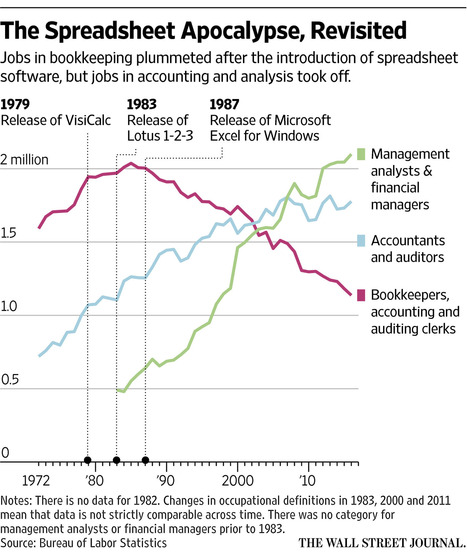(p. B1) SAN FRANCISCO — Two days after Donald J. Trump won the 2016 election, executives at Google consoled their employees in an all-staff meeting broadcast around the world.
“There is a lot of fear within Google,” said Sundar Pichai, the company’s chief executive, according to a video of the meeting viewed by The New York Times. When asked by an employee if there was any silver lining to Mr. Trump’s election, the Google co-founder Sergey Brin said, “Boy, that’s a really tough one right now.” Ruth Porat, the finance chief, said Mr. Trump’s victory felt “like a ton of bricks dropped on my chest.” Then she instructed members of the audience to hug the person next to them.
Sixteen months later, Google’s parent company, Alphabet, has most likely saved billions of dollars in taxes on its overseas cash under a new tax law signed by Mr. Trump. Alphabet also stands to benefit from the Trump administration’s looser regulations for self-driving cars and delivery drones, as well as from proposed changes to the trade pact with Mexico and Canada that would limit Google’s liability for user content on its sites.
Once one of Mr. Trump’s most vocal opponents, Silicon Valley’s technology industry has increasingly found common ground with the White House. When Mr. Trump was elected, tech executives were largely up in arms over a leader who espoused policies on immigration and other issues that were antithetical to their companies’ values. Now, many of the industry’s executives are growing more comfortable with the president and how his (p. B5) economic agenda furthers their business interests, even as many of their employees continue to disagree with Mr. Trump on social issues.
. . .
. . . quietly, the tech industry has warmed to the White House, especially as companies including Alphabet, Apple and Intel have benefited from the Trump administration’s policies.
Those include lowering corporate taxes, encouraging development of new wireless technology like 5G and, so far, ignoring calls to break up the tech giants. Mr. Trump’s tougher stance on China may also help ward off industry rivals, with the president squashing a hostile bid to acquire the chip maker Qualcomm this month. And Mr. Trump let die an Obama-era rule that required many tech start-ups to give some workers more overtime pay.
Mr. Trump “has been great for business and really, really good for tech,” said Gary Shapiro, who leads the Consumer Technology Association, the largest American tech trade group, with more than 2,200 members including Apple, Google, Amazon and Facebook.
Mr. Shapiro said that he had voted for Hillary Clinton, Mr. Trump’s opponent, in 2016, but that he and many tech executives had come around on Mr. Trump. While they disagree with him on immigration and the environment, they have found areas where their interests align, like deregulation and investment in internet infrastructure.
“This isn’t Hitler or Mussolini here,” Mr. Shapiro said. And even though the president’s new tariffs on steel and aluminum could hurt American businesses and consumers, “disagreement in one area does not mean we cannot work together in others,” Mr. Shapiro said. “Everyone who is married knows that.”
For the full story, see:
JACK NICAS. “Silicon Valley, Wary of Trump, Warms to Him.” The New York Times (Saturday, March 31, 2018): B1 & B5.
(Note: ellipses added.)
(Note: the online version of the story has the date MARCH 30, 2018, and has the title “Silicon Valley Warms to Trump After a Chilly Start.”)

